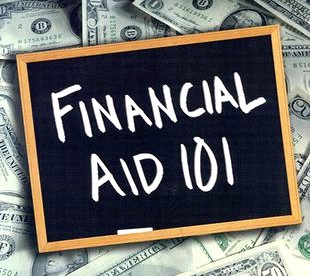
By: Emily Cho
There are two types of financial aid that a student may receive: merit and need based.
Merit scholarships are scholarships and financial aid universities will offer students based on their academic performances or specific skills. These awards are outright grants that the students do not have to repay.
Need based financial aid is awarded strictly based on a student’s financial profile, which takes into account the student’s family assets and income, with no consideration of the student’s academic merit. Federal government provides the bulk of the financial aid offered but private universities offer aid to offset the high tuition costs. After filling out forms regarding students’ and parents’ financial backgrounds, the government calculates how much the family is able to pay. Based on this information, the government can then give students several types of financial aid to help afford tuition.
There are three types of need based financial aid:
1. Grants
- These are awards that do not need to be paid back. Most grants offered by the government, such as the Pell Grant, will award students different amounts depending on their families’ financial situation.
- Many private colleges with high tuition rates will provide grants to offset amounts not covered through federal and state financial aid.
2. Work study
- This is a program that gives students who qualify the opportunity to take a part-time job, typically on campus, to help students cover day to day college costs. Although this is considered part of financial aid, it does not apply directly to student’s tuition and fees.
3. Loans
- These are loans that have a fixed interest rate that must be paid back to the government. There are 4 types of loans: Direct Subsidized Loans, Direct Unsubsidized Loans, Direct Plus Loans, Direct Consolidation Loans. Each loan differs in who is eligible and what eligibility is based on. For more information see the Federal Student Aid Loans webpage.
In order to be considered eligible for financial aid, students must create an account at the Free Application for Federal Student Aid (FASFA) webpage. The U.S. Department of Education utilizes the Federal Need Analysis Methodology to determine a student’s Expected Family Contribution (EFC). Colleges would use this information, along with financial aid eligible from the government to determine what the college will provide in additional support to meet full need.
Students and parents have from October 1st to June 30th to fill out the form. However, universities tend to have earlier deadlines and so it is important to keep track of when schools require the FAFSA form to be submitted by. Additionally, it is best to submit the forms as soon as possible, so that the students can qualify for as much aid as possible.
Beyond FAFSA, some schools will additionally ask students to create a College Board’s College Scholarship Service (CSS) profile. The CSS Profile generally provides a more thorough picture of the family household income to schools than the FAFSA does, allowing colleges to determine which types of institutional aid they can award in addition to any federal aid you might have received. The list of schools using CSS Profile can be accessed HERE.
Regardless of which form students fill out, both FAFSA and CSS will require the following information about the student and their parents.
- Social Security Number
- Federal income tax returns, W2, other records of money earned*
- Bank Statements and Records of Investments (if applicable
- Records of untaxed income (if applicable)
*This information can be automatically retrieved from the IRS Data Retrieval Tool
The CSS profile will go more into the family financial background compared to the FAFSA profile, meaning it will require more information, such as bank statements and assets.
The exact amount of financial aid a student will receive is unknown until students fill out the FAFSA and/or CSS forms. However, students and families are able to calculate a rough estimate of how much financial aid they will receive from individual colleges through a net price calculator. This link will take you to the right page on each college’s website that will give you an estimate of aid you can expect to receive. This calculator takes basic household information such as, number of people in a household and yearly income, and calculates the net price of attending the school. This allows students and families to have a clearer picture of how much they would have to pay altogether and how much financial aid they could possibly receive from that school.
Subscribe to our Newsletter
Receive inside track information on college admissions process, high school and middle school planning, general pre-college guidance, and be the first to know about our events and announcements.
About Emily Cho:
Emily is a current undergraduate student studying Media, Cultures and Communication at New York University and a contributing writer for Versed. With her experience helping high school students prepare for the SAT and their college applications, as well as her own experience going through the process, Emily understands the many challenges students face when it comes to applying to colleges. Although it can be tricky to navigate the college admissions process, she is excited to help other families and students with their journey to college.
Comments
- Versed Editors's Blog
- Log in or register to post comments
